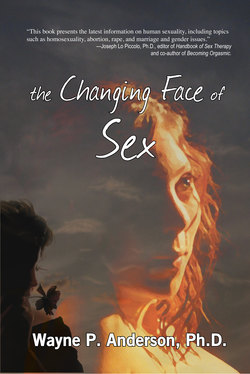Читать книгу The Changing Face of Sex - Wayne P. Anderson PhD - Страница 10
На сайте Литреса книга снята с продажи.
Sexual information taboos
ОглавлениеIn the late 1800s women lived in a world where even for someone to give them information about sex was a dangerous endeavor. Sharing sex information about birth control, sexual pleasure and sexual anatomy could result in jail time. This was partly a result of the Comstock laws that were in force at the time, which in some states remained on the books as late as the 1960s. This possibility of arrest for sharing information about sex increased both the fear and ignorance of the public about sex (D’Emilio, & Freedman, 1988).
The freedom for women to explore their own sexual responses and become orgasmic was a process that involved overcoming fear, ignorance, strictly defined social roles, and legal barriers.
Another source of fear about sex was unwanted pregnancies.The provision of birth control information, even by doctors, was illegal, but even more damaging, some doctors saw such information as dangerous because they believed that anything that interfered with pregnancy was dangerous for the woman.
Advice about sexual behavior was heavily loaded with moral admonitions. For example, William H. Walling, M.D. in his book Sexology (1904) in reacting to birth control says,“The most judicious method of avoiding offspring is entire continence during the time it is desirable or necessary to remain exempt. All other methods of prevention of offspring are disgusting, beastly, positively wrongful, as well as unnatural, and physically injurious. Some of them are so revolting that it is impossible to imagine how persons with the least pretensions to decency can adopt them. Any deliberate preparations with such an object savor too much of cold blooded calculation to be even possible with pure-minded people.”
Another more famous writer of the period, John Harvey Kellogg in his book, Plain Facts for Young and Old (1881) gave similar advice.
With this background of what we now see as misinformation and laws against freedom of information, the United States entered the 20th century with the realm of sexual behavior filled with fear, ignorance, stupid laws, multitudes of non-orgasmic women and a double standard of frightening proportions.
A Madonna-whore dichotomy existed in which only sinful women enjoyed sex and decent women did it only as a marital duty. Sex was a man’s right and a woman’s burden. Today we Americans are shocked at the treatment of Muslim women in such countries as Saudi Arabia and Pakistan, but American women into the early 20th century were in many ways treated in a similar fashion.
To be realistic, these strictures obviously did not limit all women’s sexual responsiveness. Even given the restrictions, many couples found each other sexually responsive and both partners enjoyed sex.
However, evidence from modern sex researchers, such as Helen Singer Kaplan in her 1979 Disorders of Sexual Desire on women’s lack of sex desire, indicates that when faced with repression women will often respond with a lack of sex desire or have an aversion to sex.
Other evidence, such as Becoming Orgasmic: A Sexual and Personal Growth Program for Women (1976) by Julia Heiman and Joe LoPiccolo, indicates that sex education about their bodies and permission to explore their responses is very important in helping women discover their sexual responsiveness. The Victorian era offered neither permission to enjoy sex or information about their bodies that would help women achieve satisfactory sex.
